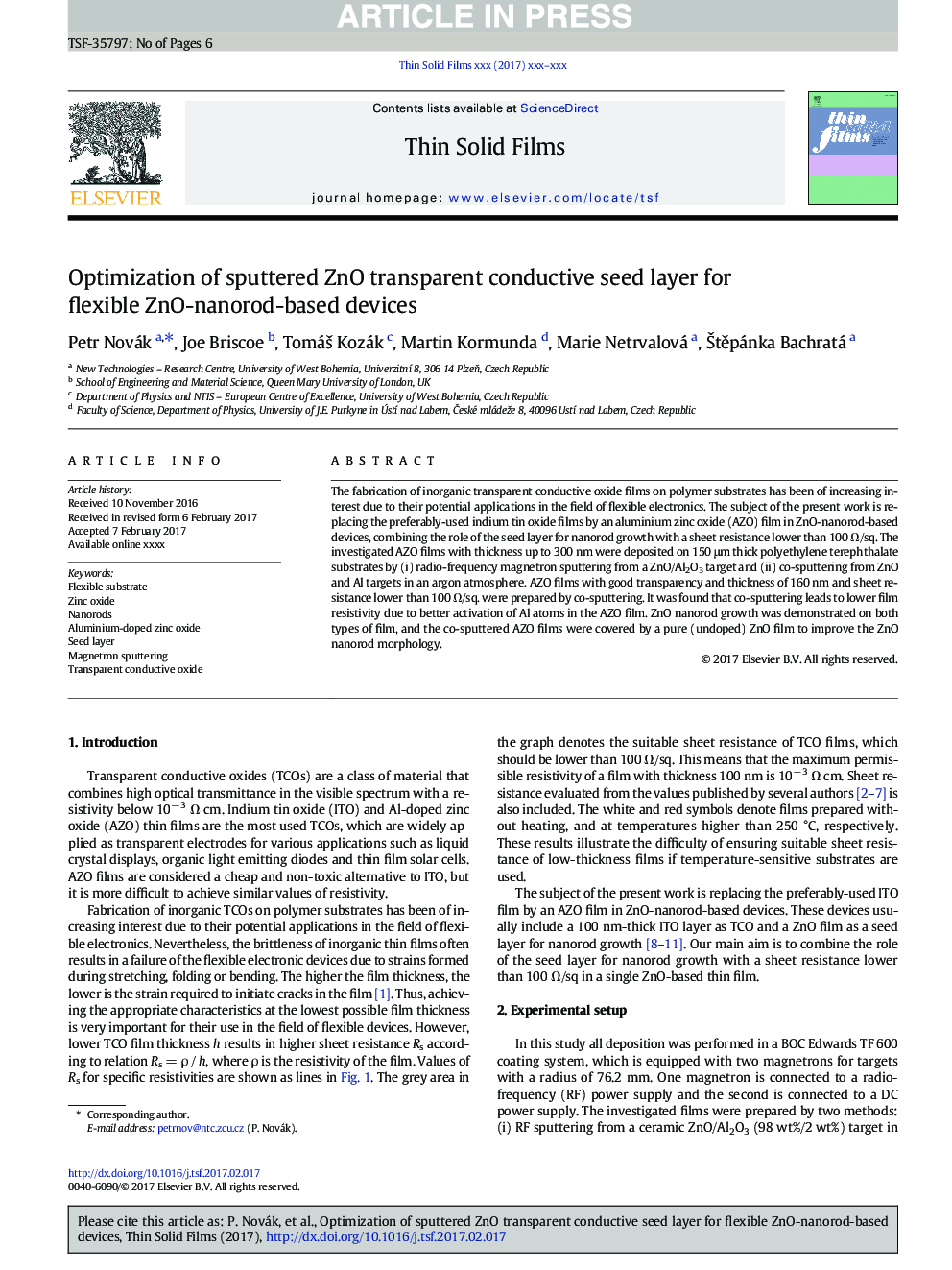| Article ID | Journal | Published Year | Pages | File Type |
|---|---|---|---|---|
| 5465839 | Thin Solid Films | 2017 | 6 Pages |
Abstract
The fabrication of inorganic transparent conductive oxide films on polymer substrates has been of increasing interest due to their potential applications in the field of flexible electronics. The subject of the present work is replacing the preferably-used indium tin oxide films by an aluminium zinc oxide (AZO) film in ZnO-nanorod-based devices, combining the role of the seed layer for nanorod growth with a sheet resistance lower than 100 Ω/sq. The investigated AZO films with thickness up to 300 nm were deposited on 150 μm thick polyethylene terephthalate substrates by (i) radio-frequency magnetron sputtering from a ZnO/Al2O3 target and (ii) co-sputtering from ZnO and Al targets in an argon atmosphere. AZO films with good transparency and thickness of 160 nm and sheet resistance lower than 100 Ω/sq. were prepared by co-sputtering. It was found that co-sputtering leads to lower film resistivity due to better activation of Al atoms in the AZO film. ZnO nanorod growth was demonstrated on both types of film, and the co-sputtered AZO films were covered by a pure (undoped) ZnO film to improve the ZnO nanorod morphology.
Keywords
Related Topics
Physical Sciences and Engineering
Materials Science
Nanotechnology
Authors
Petr Novák, Joe Briscoe, TomáÅ¡ Kozák, Martin Kormunda, Marie Netrvalová, Å tÄpánka Bachratá,
